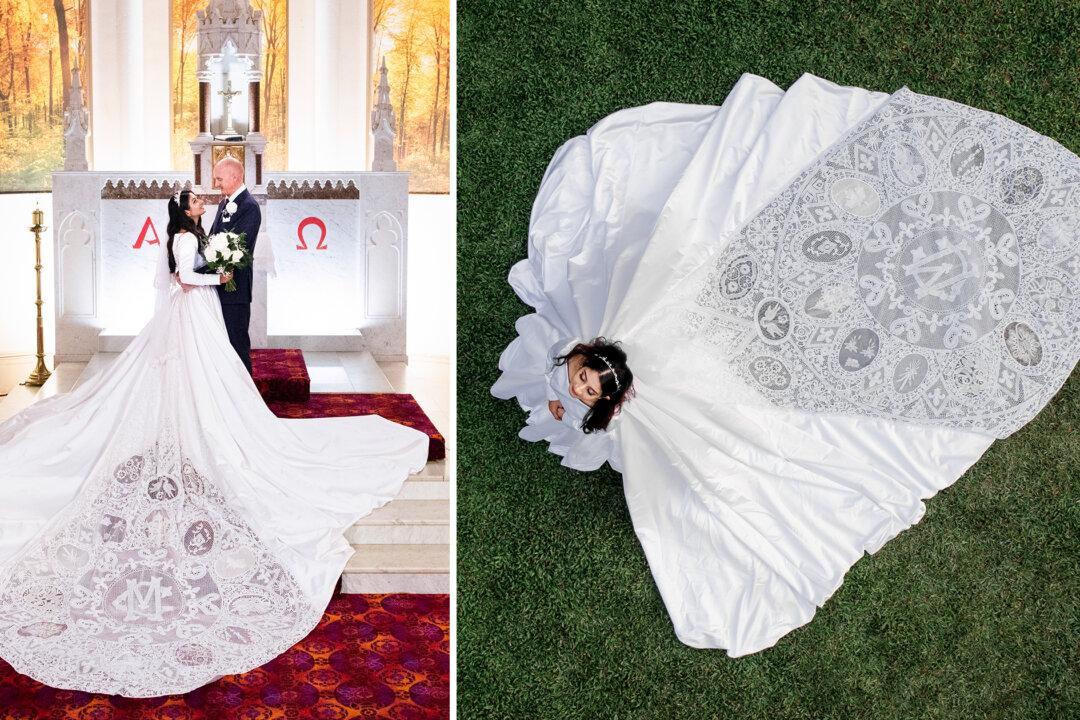A lacemaker who learned her craft from her mother has made her own spectacular wedding dress, an homage to tradition and culture, using ovals of lace made by lacemakers from 15 different countries around the world.
Engineer and bobbin lacemaker Carol D‘Silva, 30, was born in the Indian city of Goa and moved to Gold Coast in Queensland, Australia, as a teen. Ms. D’Silva, who now lives in Brisbane, always knew she wanted to make her own wedding dress, and when she met her future husband, Mark Wiemers, her plan took shape.





